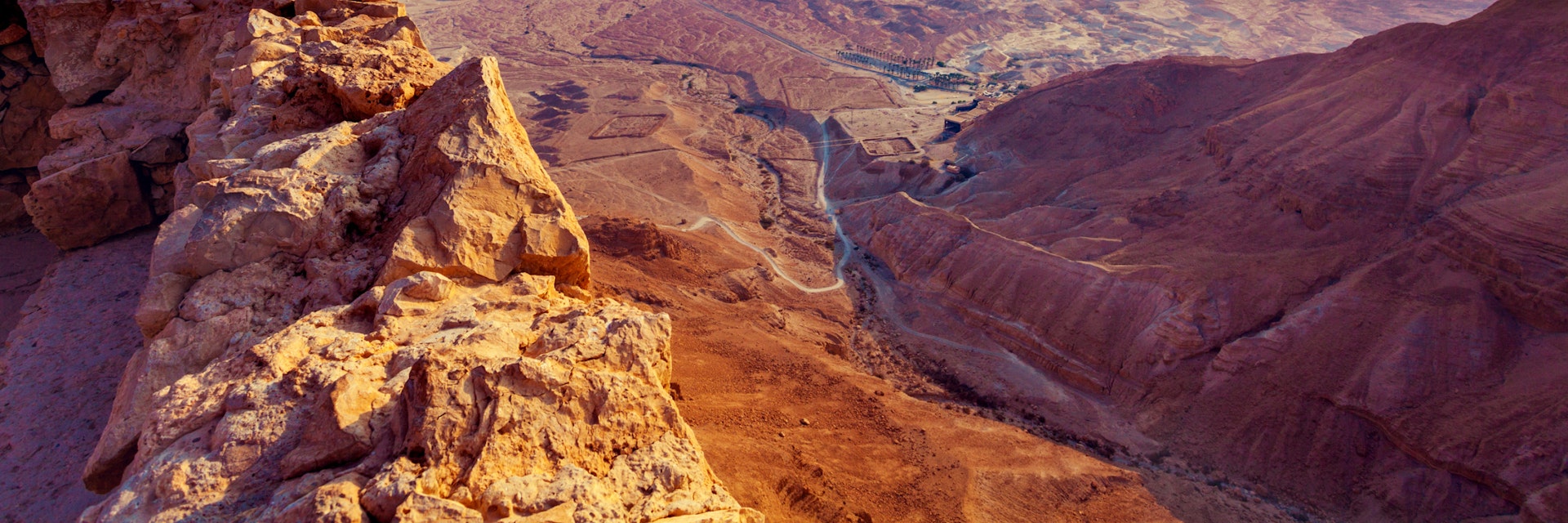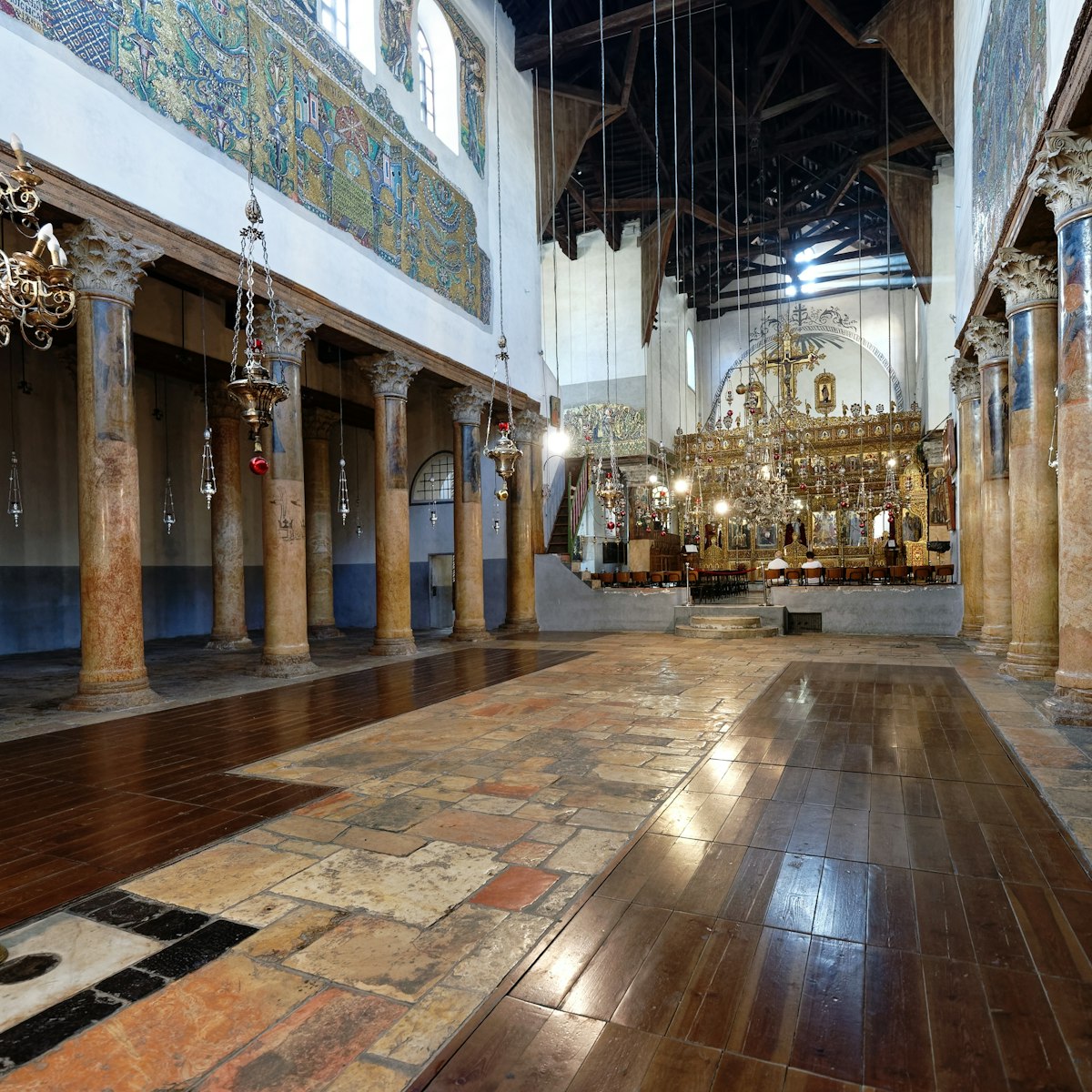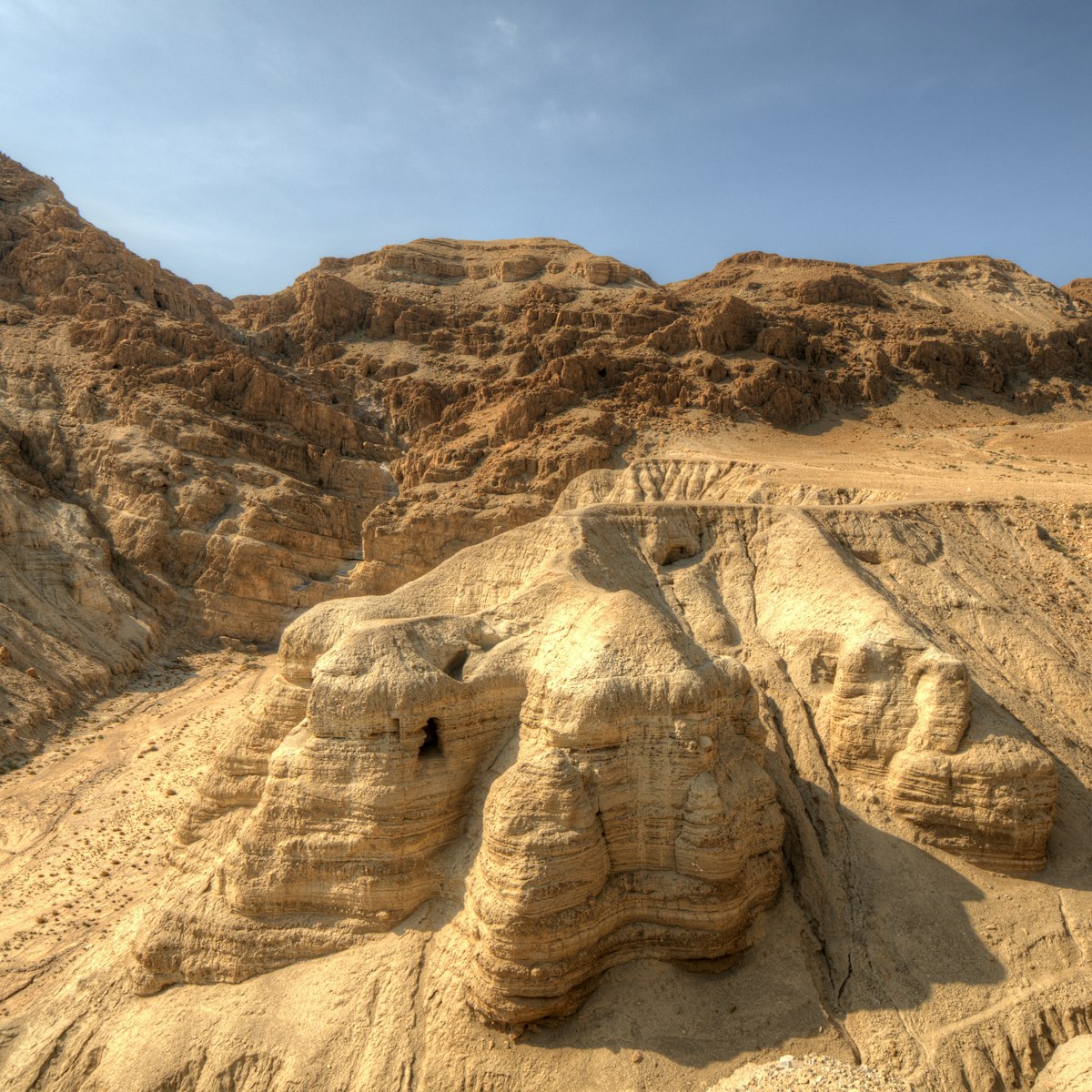The plateau atop Masada, which measures about 550m by 270m, is some 60m above sea level – that is, about 490m above the surface of the Dead Sea. The easiest way up is by cable car, though you can also hoof it – up the Roman siege ramp from the western side or up the Snake Path from the eastern side. On the ruins, black painted lines divide reconstructed parts (above) from the original remains (below).
Visitors are given an excellent map-brochure of the ruins, and historical background can also be gleaned from an audio guide (20NIS, including admission to the Masada Museum). Both are available – in eight languages – at ticket windows, atop Masada and at the museum. On the eastern side, between the ticket windows and the cable car, an eight-minute film uses dramatic clips from an American miniseries (1981) starring Peter O'Toole to introduce Masada's bloody last stand.
Drinking water is available so bring a bottle to refill. Eating atop Masada is forbidden, as is carrying large backpacks – these can be stored in lockers (10NIS) near the ticket windows on the eastern side.
Look down in any direction and chances are you’ll be able to spot at least one of the Romans’ eight military camps and their siege wall. The effort put into the siege by the Roman Legions is mind-boggling – no surprise, then, that they commemorated their victories over the rebels of Judea by erecting a monumental victory arch in the centre of imperial Rome, the Arch of Titus, whose design would later inspire Paris' Arc de Triomphe.
Masada has been a Unesco World Heritage site since 2001. The entire site, except the Northern Palace, is wheelchair accessible.
Historic events atop Masada
After the Romans conquered Jerusalem in 70 CE, almost a thousand Jews – men, women and children – made a desperate last stand atop Masada, a desert mesa surrounded by sheer cliffs and, from 72 CE, the might of the Roman Empire’s Tenth Legion. As a Roman battering ram was about to breach their walls, Masada’s defenders chose suicide over enslavement. When Roman soldiers swarmed onto the top of the flat-topped mountain, they were met with silence.
Until archaeological excavations began in 1963, the only source of information about Masada’s heroic resistance and bloody end was Josephus Flavius, a Jewish commander during the Great Jewish Revolt (66–70 CE) who, after being captured, reinvented himself as a Roman historian. He writes that as the Roman siege ramp inched towards the summit, the defenders – Zealots known as Sicarii (Sikrikin in Hebrew) because of their habit of assassinating their (Jewish) rivals using a curved dagger (sica in Greek) hidden under their cloaks – began to set fire to their homes and possessions to prevent them falling into Roman hands. Ten men, who would have the task of killing everyone else, were then chosen by lot. Nine of the 10 were executed by one of their number before the last man alive committed suicide. When the Romans broke through everyone was dead – except for two women and five children, who had survived by hiding.








